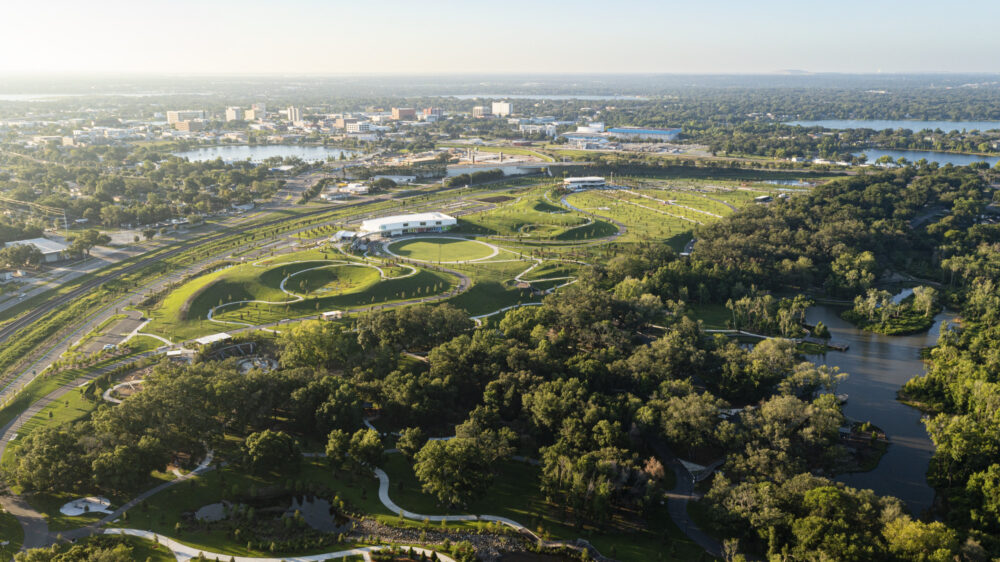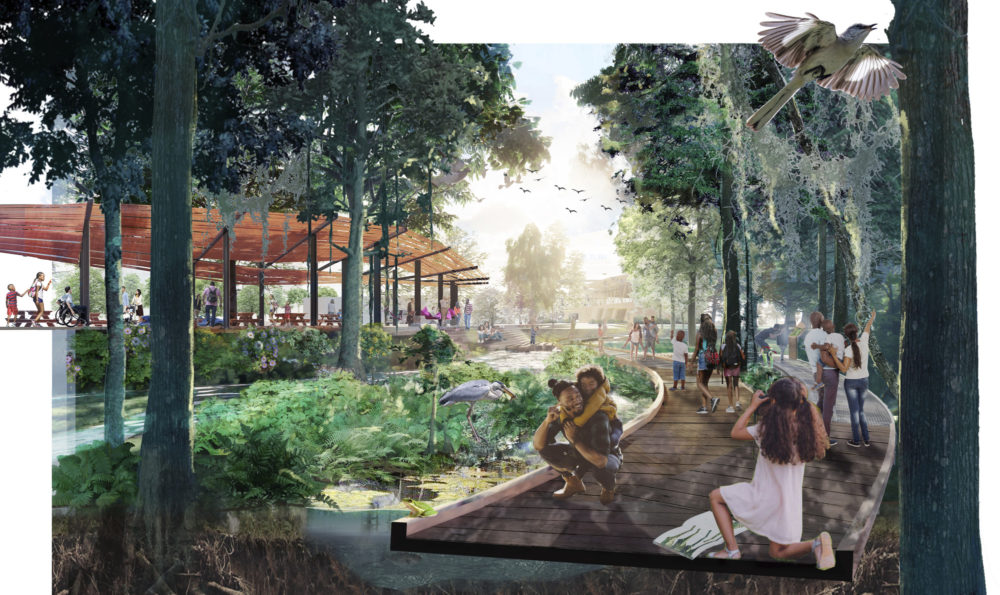Transforming a private golf course into a 230-acre living museum of trees
Arboretum San Antonio Comprehensive Plan
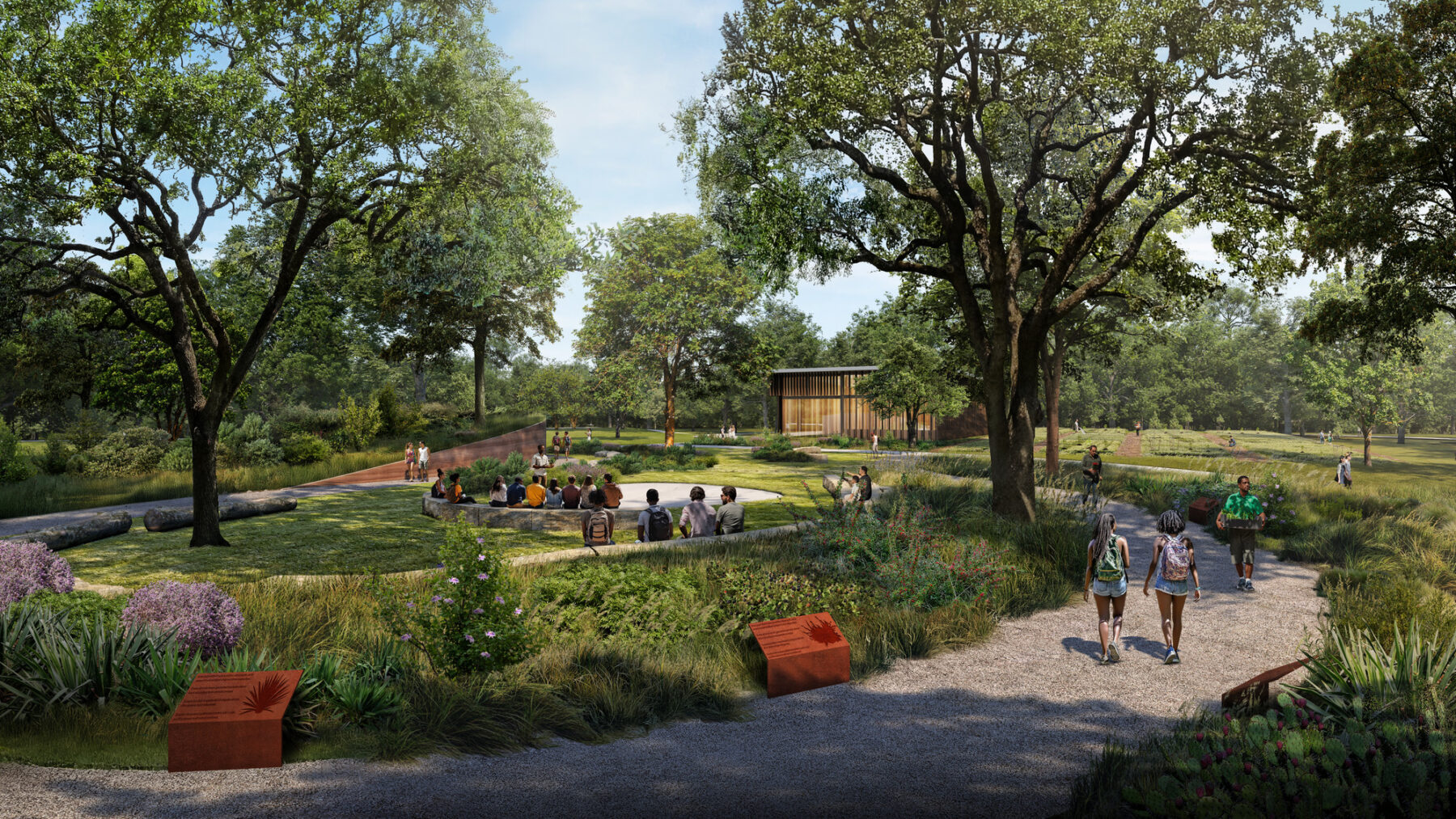
As the population of San Antonio, Texas grows to exceed 1.4 million people, so does the demand to preserve green space, promote equitable access to high-quality parks, and provide meaningful nature education. Recognizing this expanding need, the newly formed Arboretum San Antonio organization and Bexar County engaged Sasaki to transform a privately-owned golf course into a vibrant, accessible “museum of trees”. The 230-acre Arboretum San Antonio Comprehensive Plan envisions a free and restored landscape, using trees as a medium to celebrate the region’s natural and cultural heritage.
Located on San Antonio’s southeast side, Arboretum San Antonio will connect over 25 miles of parks along Salado Creek, expanding access to high-quality, free green spaces across the city, especially in underserved neighborhoods. The arboretum will include botanical collections, educational spaces, contemplative trails, and culturally responsive programming, serving as a public amenity and vital urban heat refuge for the region. The planning process integrated rigorous site analysis, indigenous and cultural research, and multilingual community engagement to inform a multi-pronged master plan.
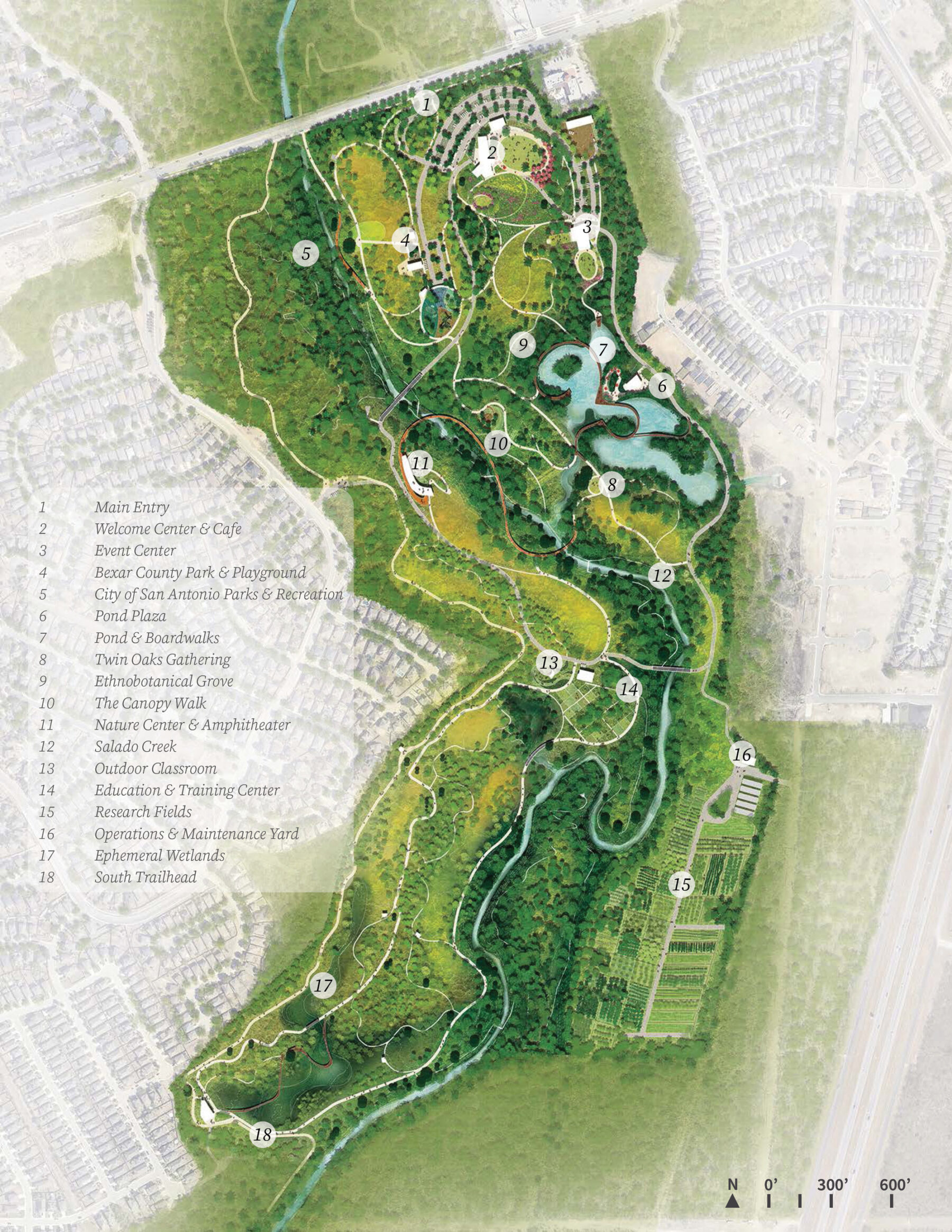
Site Plan
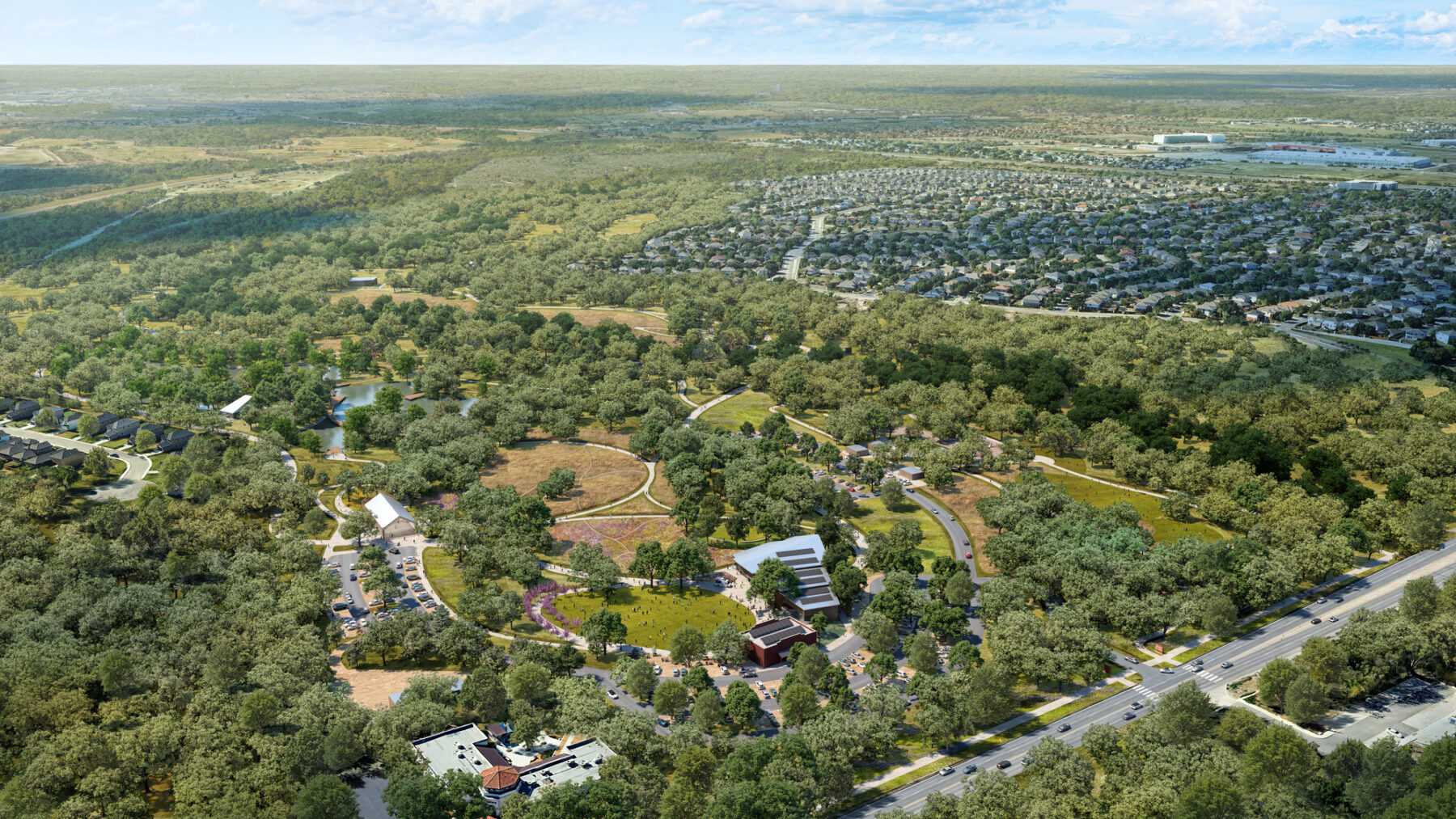
Aerial view of arboretum
Interpreting Texan Ecologies
The park’s design is shaped by the site’s unique location, straddling the Balcones Escarpment Fault Line and within the Edwards Aquifer. It sits at the intersection of multiple ecoregions, making it a prime location to showcase Texas’s ecological diversity. Through rigorous GIS analysis and field surveys, the design team documented existing flora and fauna, mapped historic habitat types, and identified critical features necessary to restore the native ecology.

Arboretum San Antonio’s location at a crossroads of four major Texan ecoregions creates a biodiversity hotspot and an opportune place to interpret Texan ecologies to the public.

By mapping remnant habitats and species, the team created a long-term management plan that supports biodiversity, community science, and culturally rooted restoration practices.
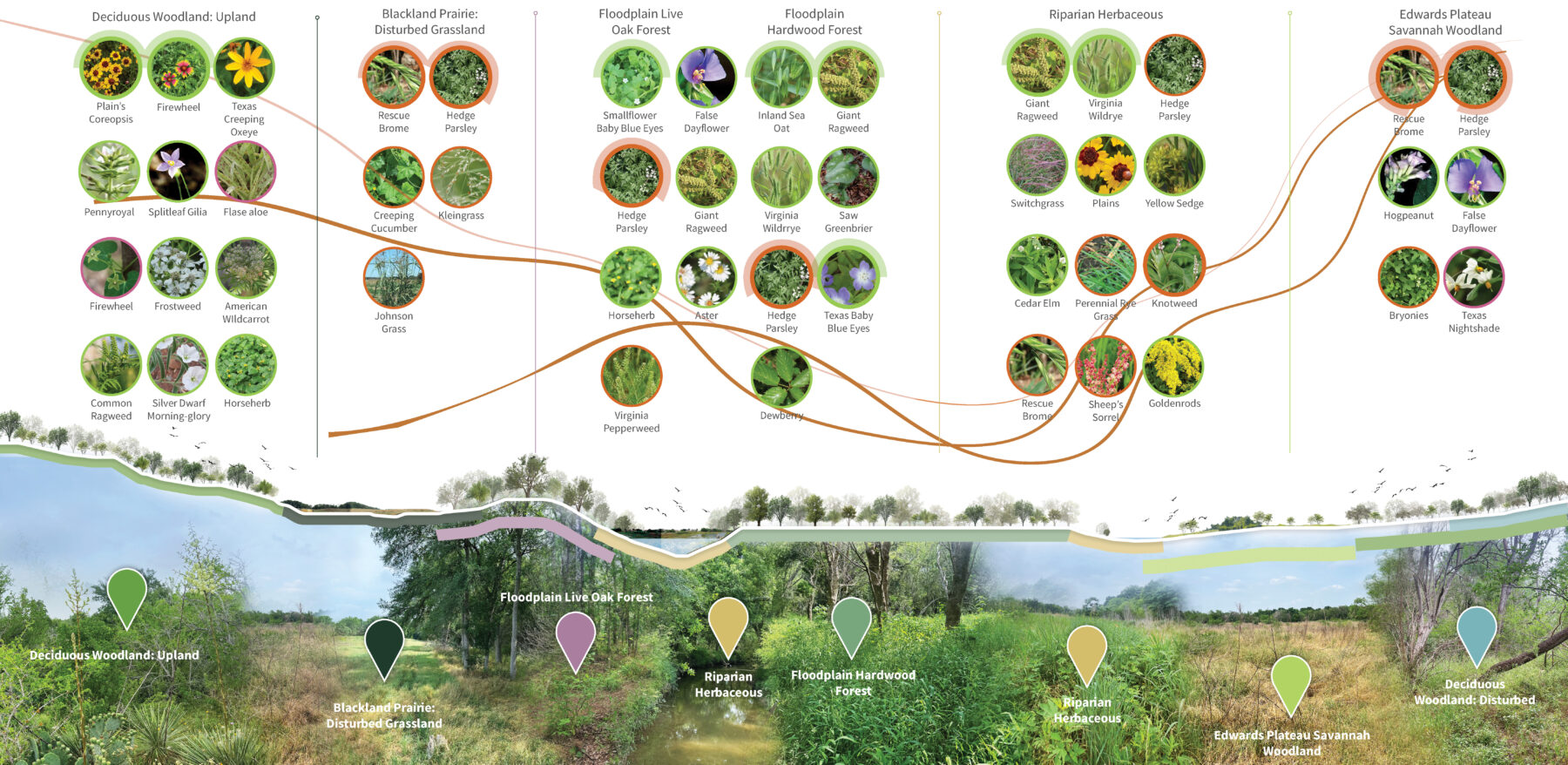
Cultural heritage, and particularly Indigenous histories, is a core element of the design. The area is known as ‘Yanaguana’ by Coahuiltecan-speaking peoples, who long used the region’s waterways for travel, trade, and settlement. The site contains Paleo-Indian archaeological features and a historical battle marker, informing both preservation efforts and interpretive programming.
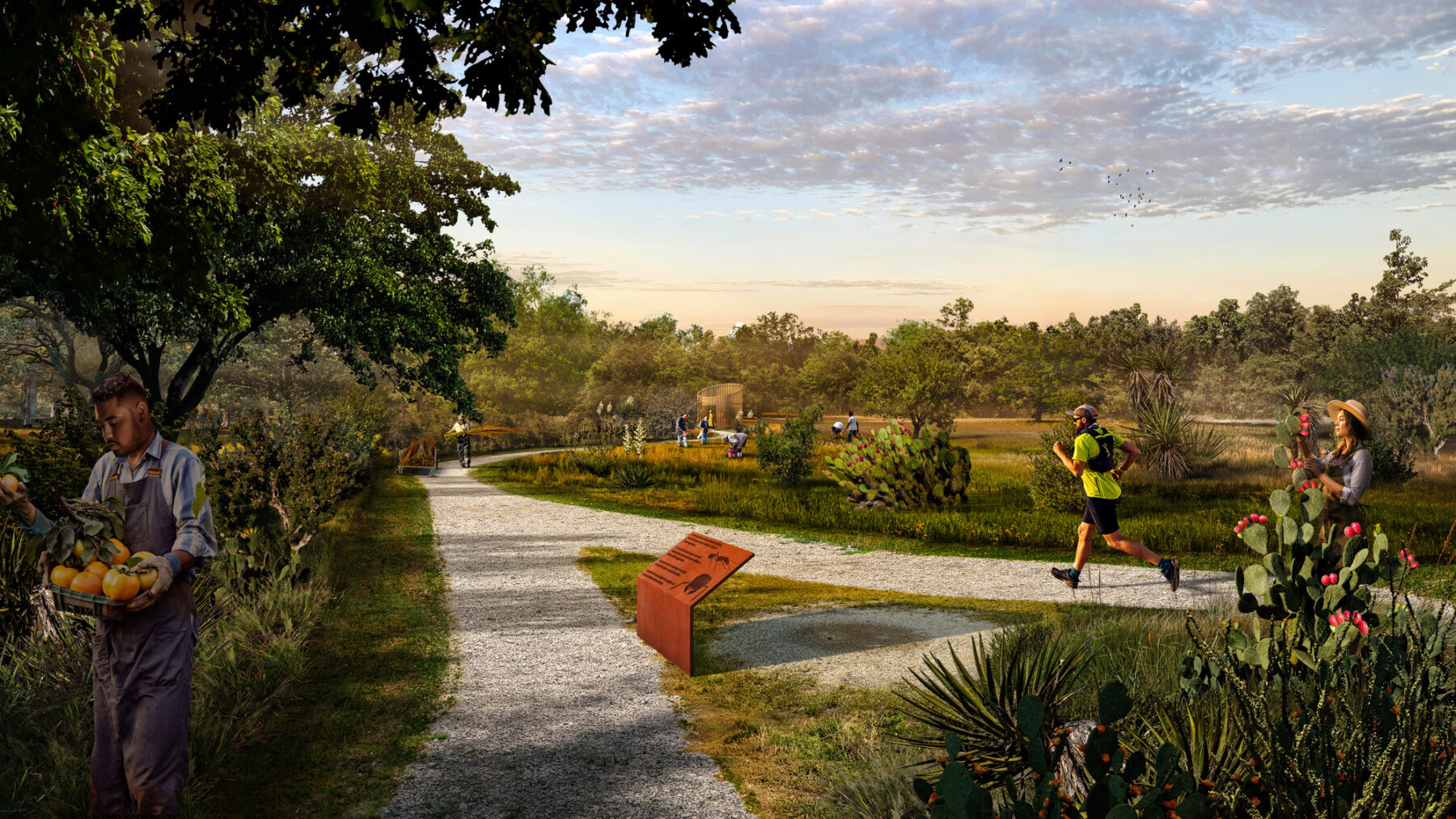
The arboretum honors indigenous heritage through landscape restoration and interpretive elements that reflect traditional ecological knowledge.
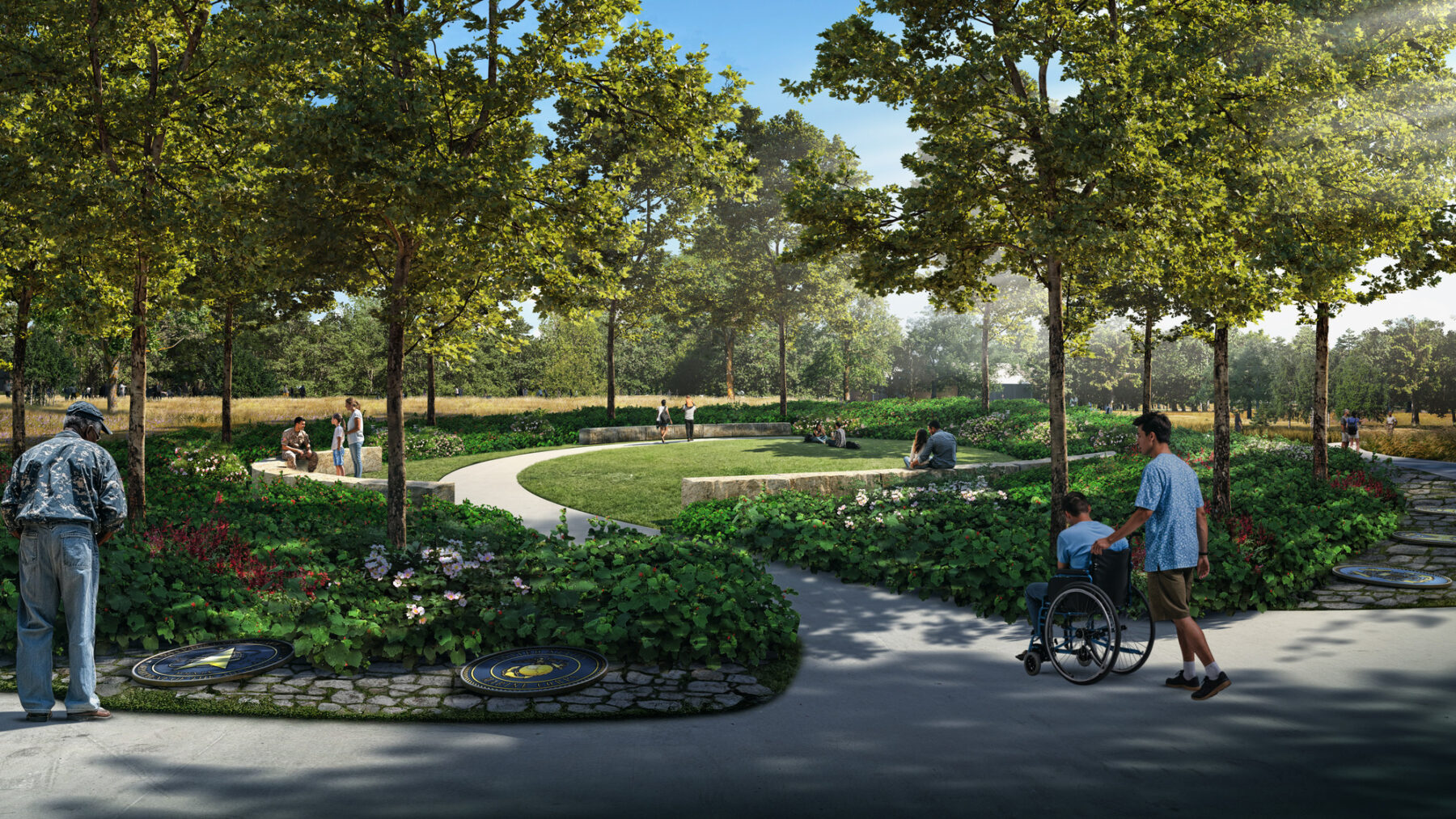
The plan incorporates multiple cooling strategies, interactive water features, low-albedo materials, shaded pavilions, and indoor climate-controlled spaces to ensure the park’s role as a vital urban heat refuge.
A Museum of Trees
A defining feature of the arboretum is its collection of “hero trees”—majestic specimens that have grown for a century or more. These include live oaks, cedar elms, green ash, pecan, and Texas persimmon, many of which are in the 90th percentile for size and age. Over 70% of the site is forested, and trails are designed to highlight these trees while minimizing disturbance to their root zones. These living monuments embody the cultural and ecological history of San Antonio and serve as focal points for education.
Looking forward, the arboretum will showcase over 150 native and adapted tree and shrub species that make up San Antonio’s diverse urban forest. A long-term goal is to achieve Level III Arboretum Certification, requiring documentation of over 500 species. The San Antonio 2100 Collection will help diversify the arboretum’s collection, focusing on heat- and drought-resistant species suited for future climate conditions.
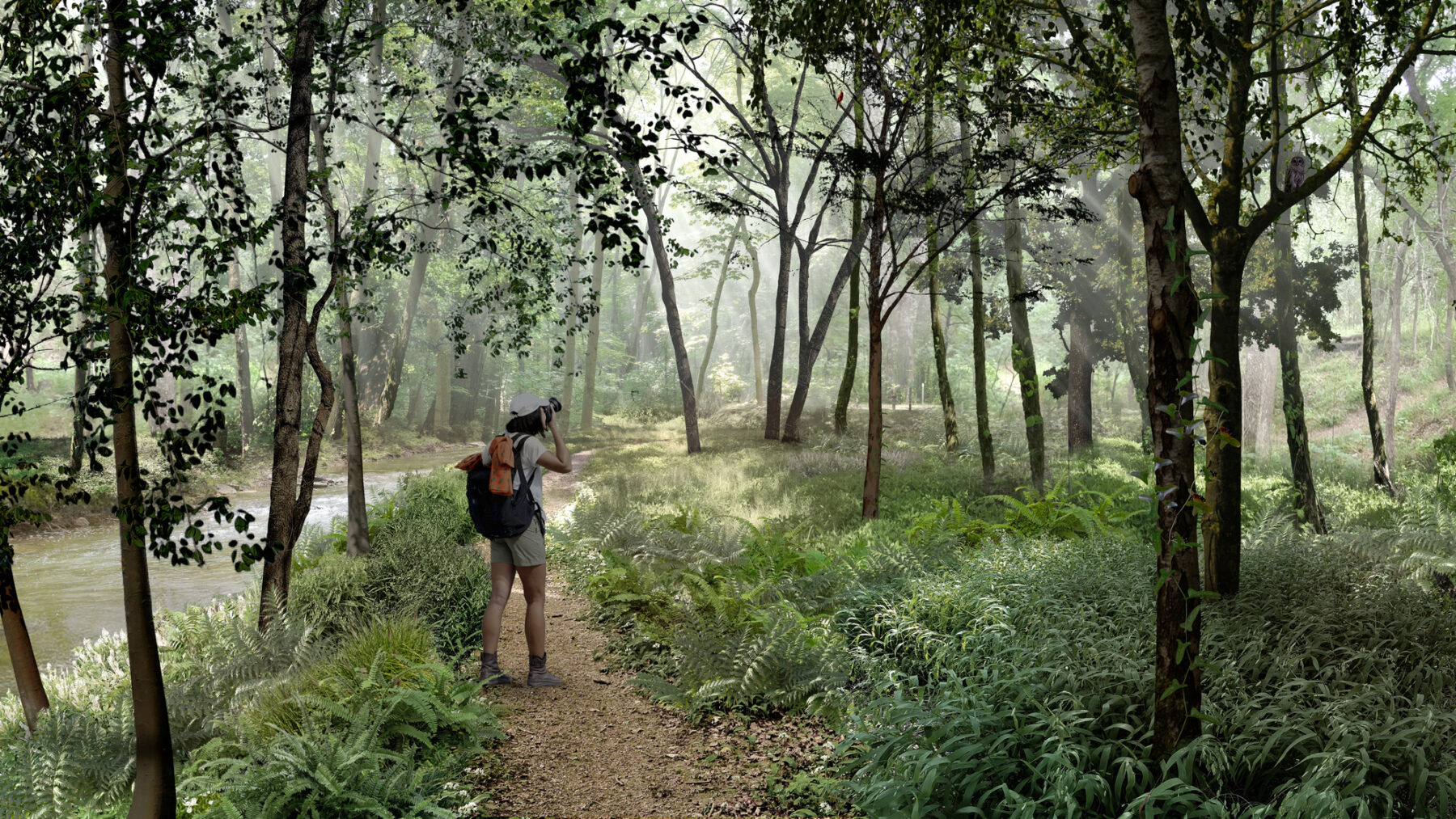
Today, the arboretum hosts over 30 woody species, with more than 70% of the site covered by forest canopy. Notable specimens include large-caliper live oaks, cedar elms, and pecans, some reaching up to 75 inches in circumference.
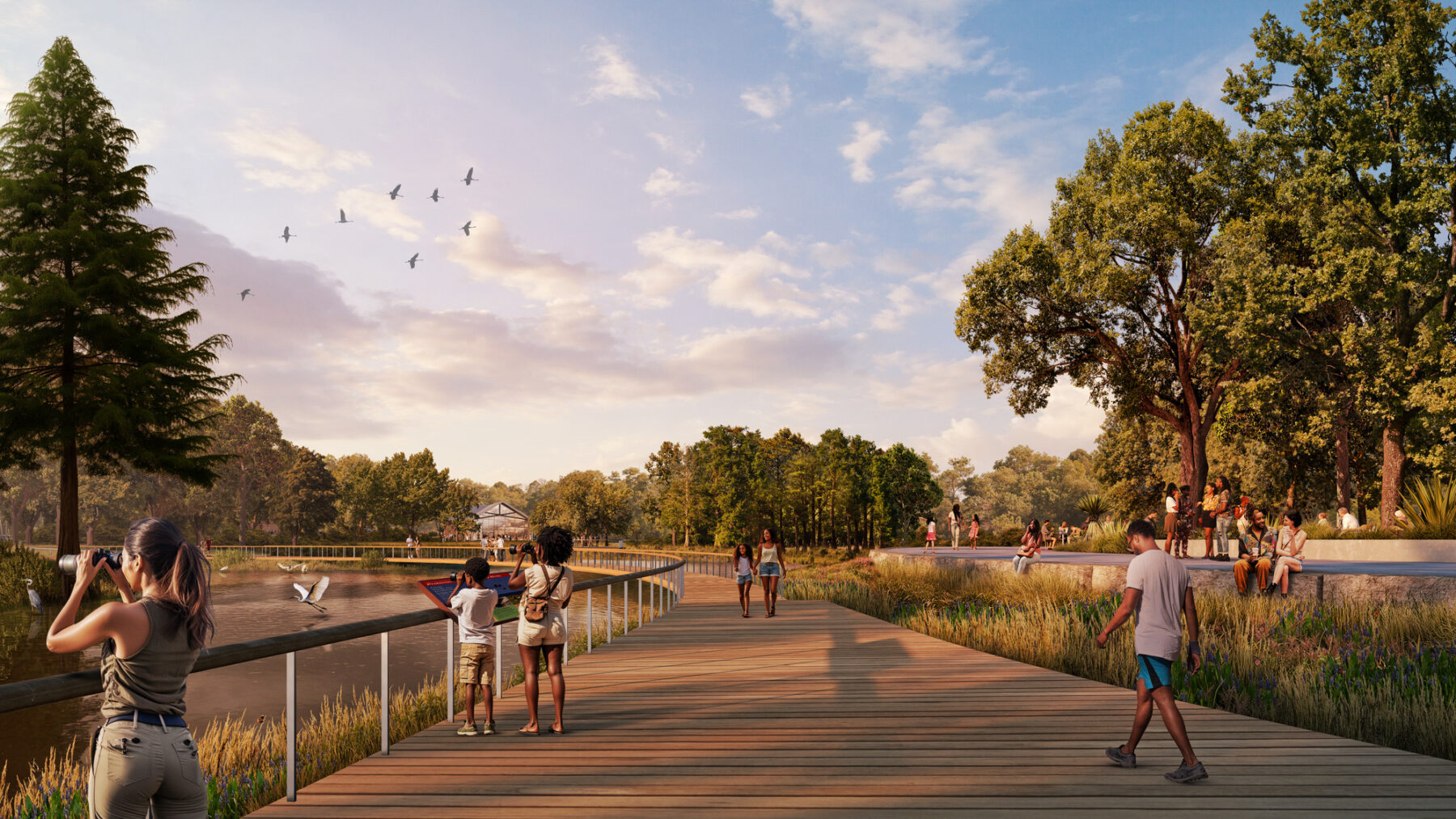
Ecological Restoration as a Core Mission
Restoration and land stewardship are fundamental to the arboretum’s mission of interpreting and preserving the region’s rich biodiversity. Despite decades of agricultural and golf course use, the presence of historical habitat types, historic trees, and a re-emerging seed bank suggests strong potential for restoration. Through floral survey transects, the team identified remnant plant species, creating a baseline that will be used in post-occupancy studies and citizen science research to measure restoration success. An Ecological Management Plan outlines strategies to support biodiversity, strengthen inter-species food webs, and manage invasive tree species.

The Arboretum’s Restoration Management Plan sets goals for habitat functionality and identifies key drivers for soil restoration, hydrologic processes, and recruitment of native plant species to benefit resident and migratory species.
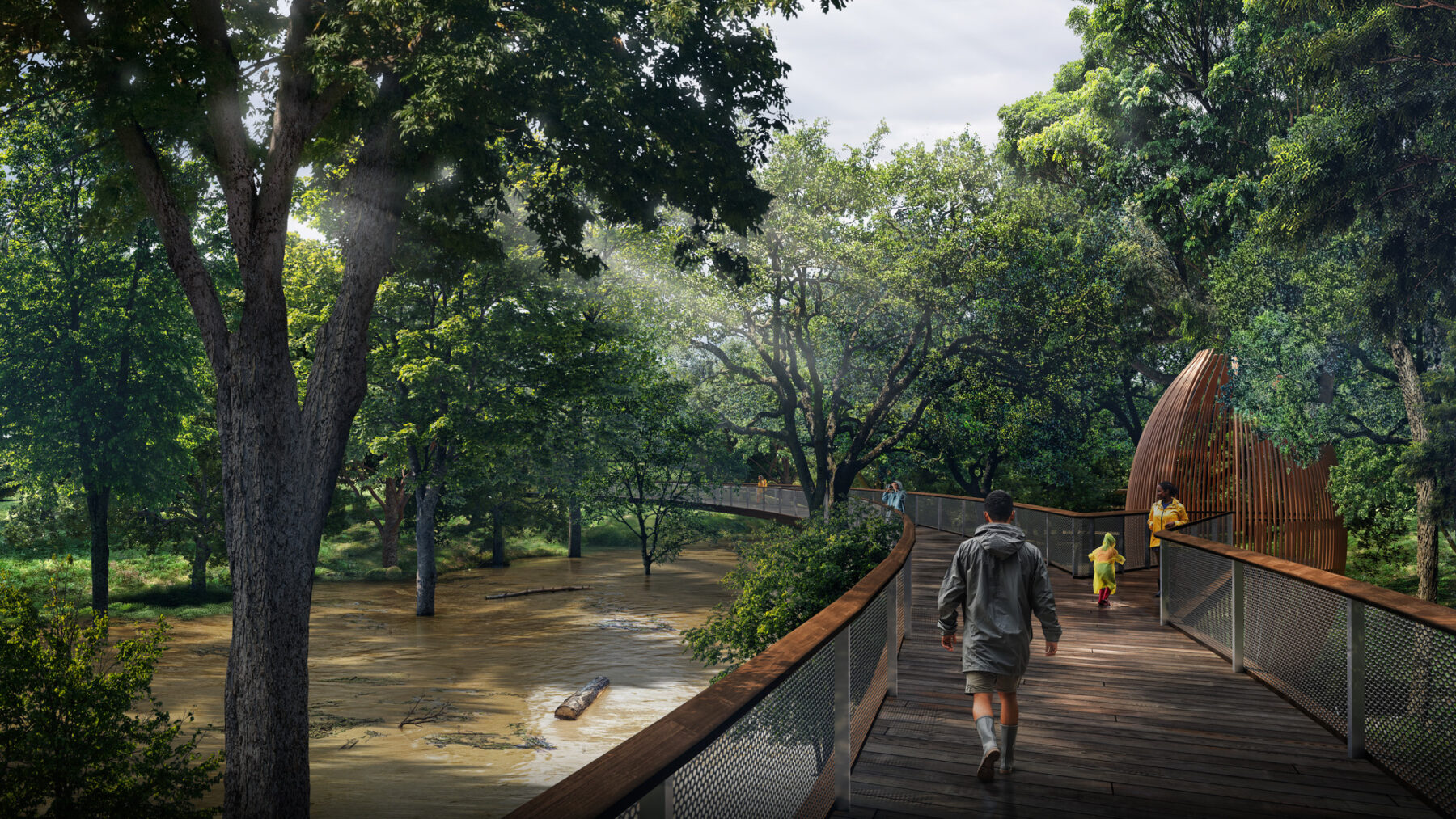
A canopy walk provides safe, accessible, and elevated views of the creek and its old-growth trees, even during flood events.
Water systems play a major role in the arboretum’s function and design with more than 80% of the site lying within the 100- and 500-year floodplain of Salado Creek. This geography allows the park to act as a natural stormwater filter for nearby neighborhoods and commercial zones. The floodplain and 1.5-mile stretch of Salado Creek were meticulously studied in partnership with the San Antonio River Association to assess erosion, sedimentation, and debris collection. With up to 35’ elevation in creek crests, analysis and flood safety informed the location of trails and buildings, and the design of the community-favorite Canopy Walk–a safe, elevated, and accessible path through flood-prone areas offering unique views of mature creekside trees.
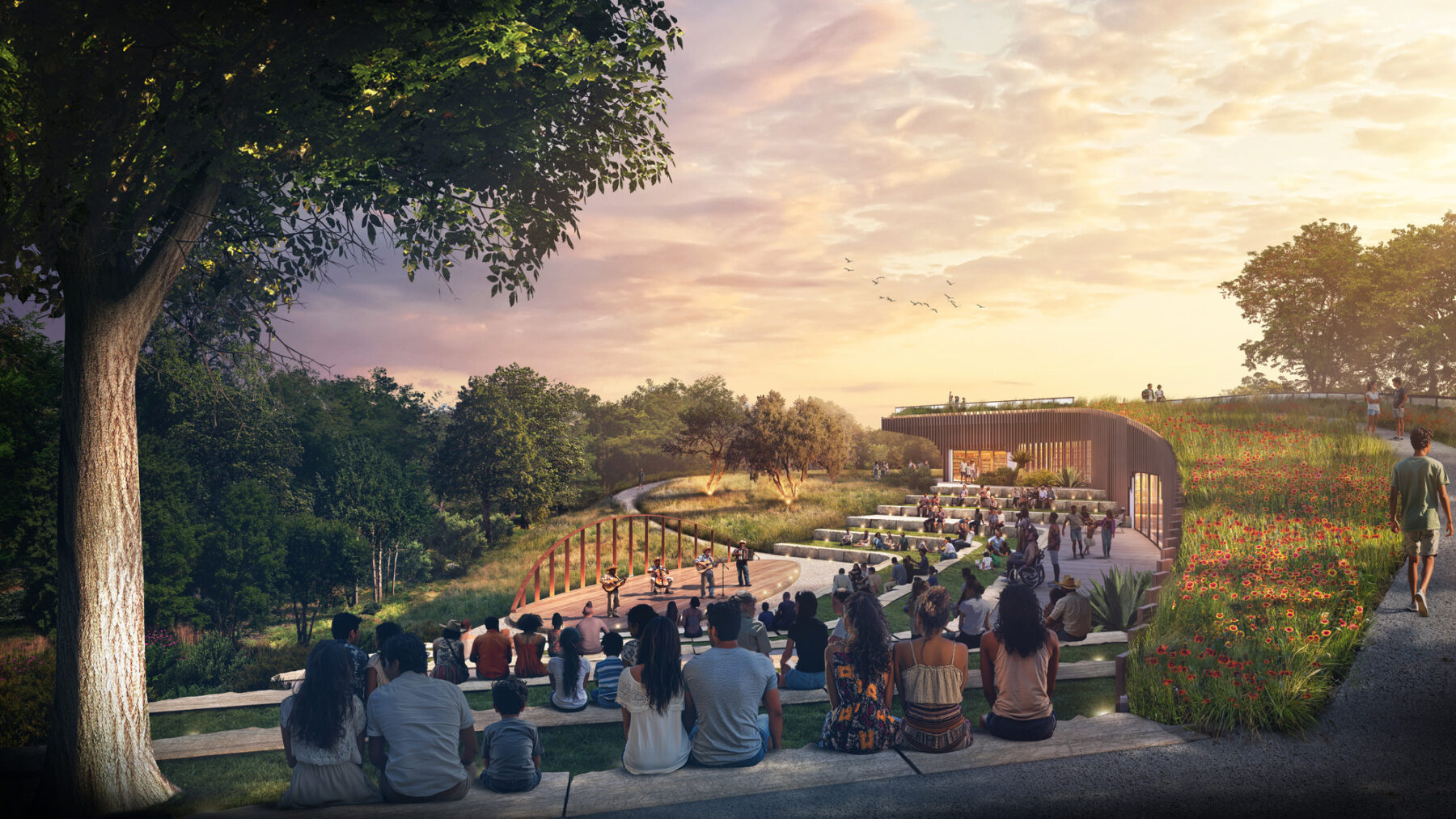
Culturally responsive programming serves as a public amenity and platform for environmental education and equity.
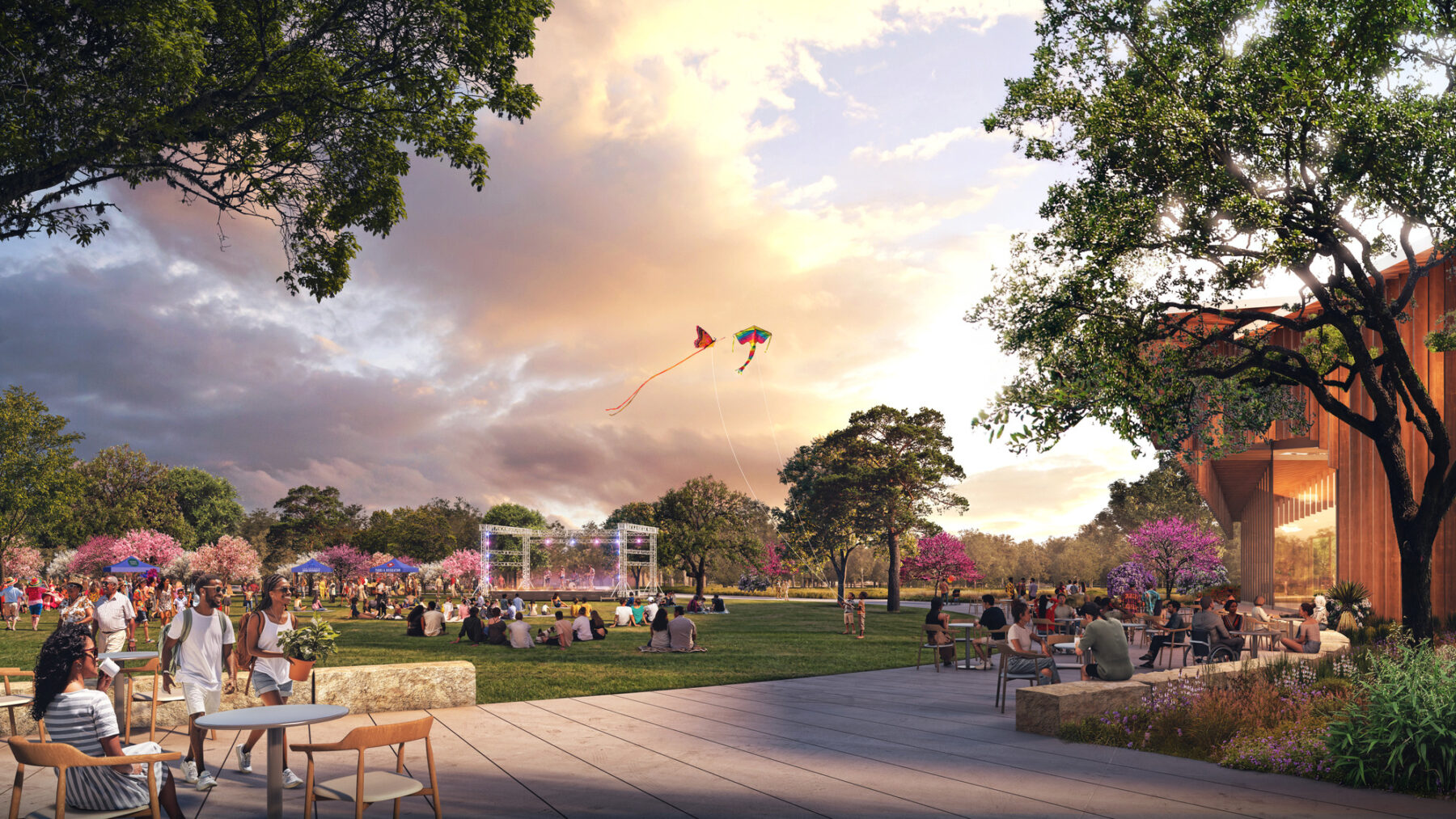
Stormwater best practices are integrated throughout the site, including bioswales, cisterns, and green roofs. A reimagined irrigation pond, fed by recycled water, has been expanded and linked with a wetland basin to create a larger system for filtration, detention, and irrigation reuse. Nearly one mile of restored tributaries feed into Salado Creek, with restored banks and newly formed wetlands supporting riparian biodiversity and groundwater recharge. These features improve water quality and also provide unique wetland experiences for visitors, showcasing plants and migrating waterfowl.
Community-Centered Design
The planning team used a variety of outreach methods to gather input from residents and stakeholders to ensure demographic representation of southeast San Antonio. Three large community events were held at key milestones, which allowed attendees of all ages to share their preferences for the site’s design, including highlighting indigenous history, water stewardship, and a desire for a canopy walk. Additional outreach methods included four multilingual online surveys, six pop-up events, two focus groups, and various news articles highlighting the design steps. In total, over 18,000 people were engaged, ensuring that the arboretum reflects the community’s needs and aspirations.
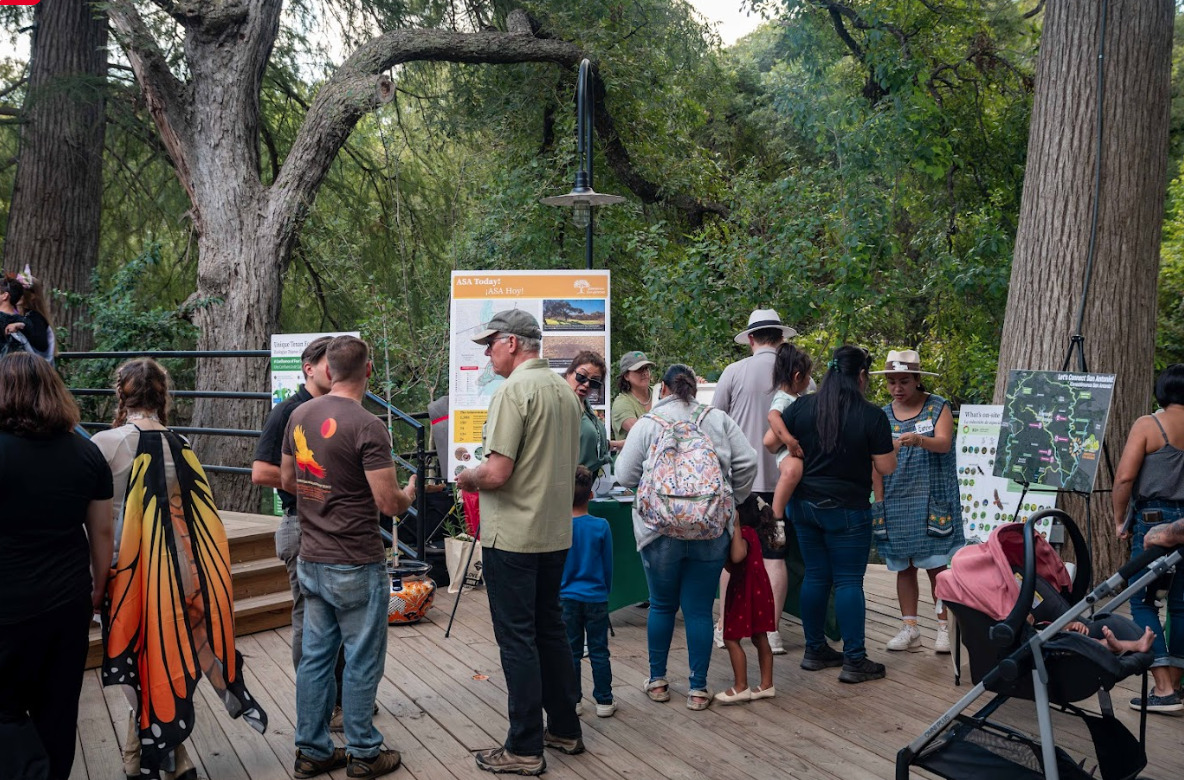
Over a year, the master plan effort engaged over 18,000 San Antonio residents through an inclusive and accessible feedback process that was designed to reach diverse communities across the city.

The Arboretum San Antonio Comprehensive Plan was completed and revealed to the public in May 2025. The Arboretum’s botanical collections, education spaces, contemplative trails, and culturally responsive programming will serve as a public amenity and a platform for environmental equity, exemplifying how thoughtful planning can shape inclusive, ecologically meaningful spaces for generations to come.
Sasaki is currently working with Arboretum San Antonio in the transition to a Phase 1 implementation through immediate site activation, donor tours, and a city-sponsored tree nursery.
For more information contact Anna Cawrse.

